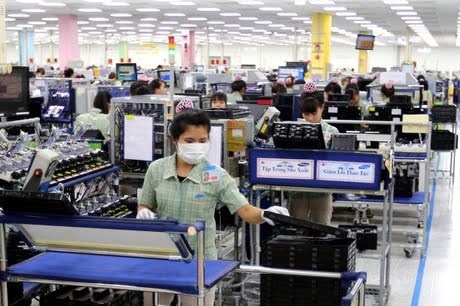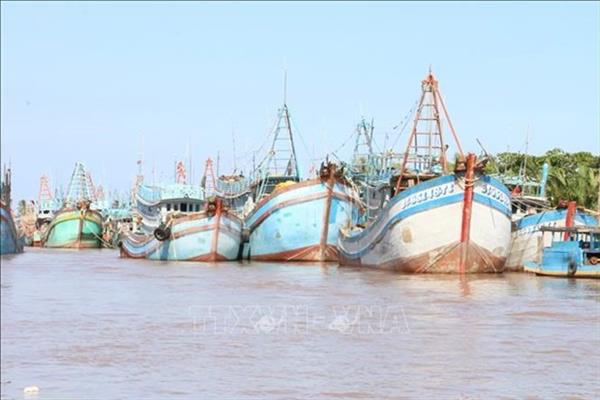Hanoi, November 2 (VNA) - The zero percent tariff under the ASEAN-China Free Trade Agreement (ACFTA) will bring more goods from ASEAN and China to Vietnam.
This will create more competition for local products, according to experts. The Government has issued a decree on special preferential tariffs for ASEAN and Chinese products for the 2016-18 period according to commitments under the ACFTA.
Under the decree, hundreds of goods from ASEAN and China will enjoy zero percent import tax to Vietnam. The goods include vegetables, fruits, processed or preserved fish and other kinds of seafood, as well as cacao and cacao products, cereal, flour and meat.
According to the commitments at ACFTA, Vietnam will abolish tax or reduce it to zero percent for 90 percent of existing tariff lines by the end of 2018, while the remaining 10 percent of tariff lines will see it reduced by 2020.
A representative from the Vietnam Chamber of Commerce and Industry’s WTO Support Centre said the reduction of import tariffs for ASEAN and Chinese goods would create strict competition between ASEAN, Chinese goods and local products.
General Statistics Office (GSO) statistics showed that in the first nine months of this year, Vietnam had the highest import of goods from China, with total import value at 36 billion USD. Its trade deficit with China reached 21.3 billion USD, Nguoi Lao Dong newspaper reported.
Local enterprises imported from China seafood valued at 45.3 million USD, vegetables and fruit at 146.9 million USD, fabrics at 3.93 billion USD and material for textile, garments, leather and footwear industries at 1.38 billion USD, as well as computer and electronic products valued at 4.1 billion USD, machine and equipment at 6.5 billion USD and steel at 3.2 billion USD.
Nguyen The Bao, Director of the Suoi Lon Agricultural, Service, Trade and Tourism Cooperative in southern Dong Nai province, said mango growers studied supply at home and also in neighbouring countries to make plans accordingly on production, trading and competition. Depending on the prevailing situation, Vietnamese mangos were exported to Thailand, Cambodia and vice versa. Meanwhile, after many years of exporting mangos from Vietnam to China, the neighbouring country had begun exporting its mangos to Vietnam to compete with local products.
Nguyen Cong Thua, Chairman and General Director of the Anh Dao Agricultural Service Cooperative in the central highlands province of Lam Dong, said demand for fruit in the home market had increased, therefore there were times the market lacked supply of fruits and their import surged. As a result, in the future, local farmers would face strict competition from imported fruit products because of their small and medium production scales with high production cost, while China’s producers had large production scale with lower production cost, he said.
Meanwhile, Vietnam did not have many technical barriers for imported fruit and lacked close control for quality and food safety, which was disadvantageous for local fruit producers while competing with imported fruits, he said.
Seafood is also expected to face similar competition when the import tax reduces to zero percent under the ACFTA.
This will create more competition for local products, according to experts. The Government has issued a decree on special preferential tariffs for ASEAN and Chinese products for the 2016-18 period according to commitments under the ACFTA.
Under the decree, hundreds of goods from ASEAN and China will enjoy zero percent import tax to Vietnam. The goods include vegetables, fruits, processed or preserved fish and other kinds of seafood, as well as cacao and cacao products, cereal, flour and meat.
According to the commitments at ACFTA, Vietnam will abolish tax or reduce it to zero percent for 90 percent of existing tariff lines by the end of 2018, while the remaining 10 percent of tariff lines will see it reduced by 2020.
A representative from the Vietnam Chamber of Commerce and Industry’s WTO Support Centre said the reduction of import tariffs for ASEAN and Chinese goods would create strict competition between ASEAN, Chinese goods and local products.
General Statistics Office (GSO) statistics showed that in the first nine months of this year, Vietnam had the highest import of goods from China, with total import value at 36 billion USD. Its trade deficit with China reached 21.3 billion USD, Nguoi Lao Dong newspaper reported.
Local enterprises imported from China seafood valued at 45.3 million USD, vegetables and fruit at 146.9 million USD, fabrics at 3.93 billion USD and material for textile, garments, leather and footwear industries at 1.38 billion USD, as well as computer and electronic products valued at 4.1 billion USD, machine and equipment at 6.5 billion USD and steel at 3.2 billion USD.
Nguyen The Bao, Director of the Suoi Lon Agricultural, Service, Trade and Tourism Cooperative in southern Dong Nai province, said mango growers studied supply at home and also in neighbouring countries to make plans accordingly on production, trading and competition. Depending on the prevailing situation, Vietnamese mangos were exported to Thailand, Cambodia and vice versa. Meanwhile, after many years of exporting mangos from Vietnam to China, the neighbouring country had begun exporting its mangos to Vietnam to compete with local products.
Nguyen Cong Thua, Chairman and General Director of the Anh Dao Agricultural Service Cooperative in the central highlands province of Lam Dong, said demand for fruit in the home market had increased, therefore there were times the market lacked supply of fruits and their import surged. As a result, in the future, local farmers would face strict competition from imported fruit products because of their small and medium production scales with high production cost, while China’s producers had large production scale with lower production cost, he said.
Meanwhile, Vietnam did not have many technical barriers for imported fruit and lacked close control for quality and food safety, which was disadvantageous for local fruit producers while competing with imported fruits, he said.
Seafood is also expected to face similar competition when the import tax reduces to zero percent under the ACFTA.
VNA/VNP

















